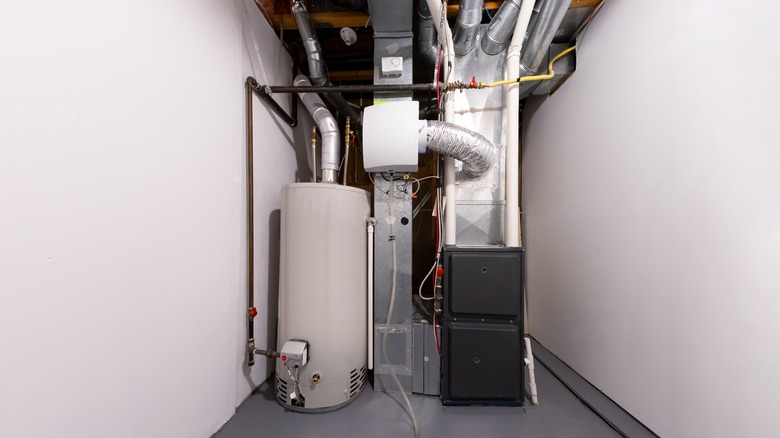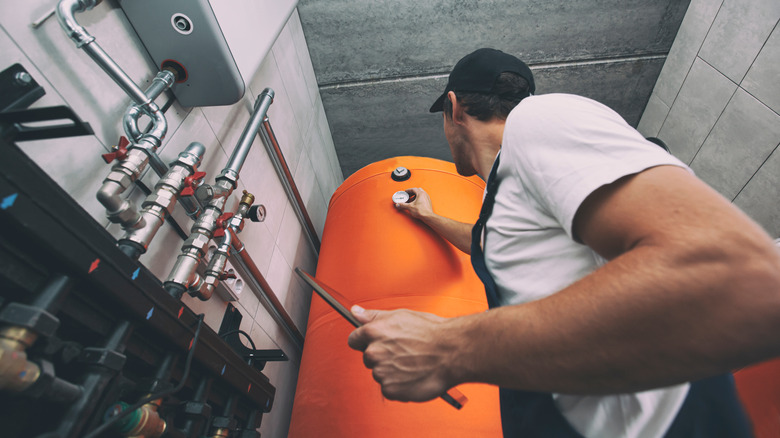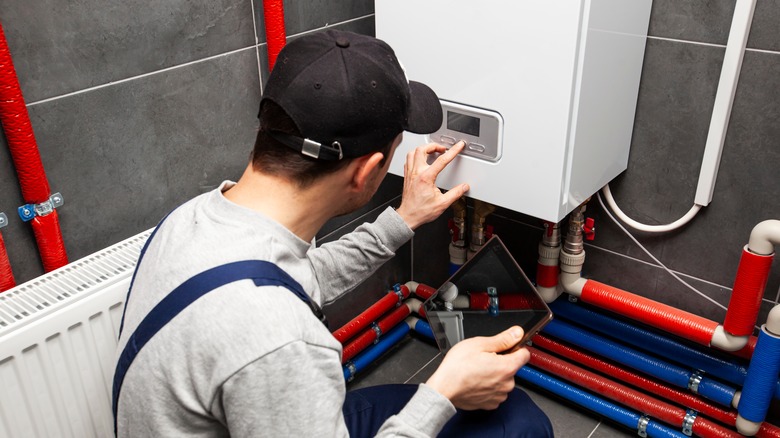How To Choose The Right Water Heater Size
Modern homes come equipped with a water heater that provides a crucial service in creating comfortable showers, hot water for washing dishes and clothes, and much more. Hot water is a feature that has become an essential part of any home that someone might think of living in.
The tool that provides this service is made up of many intricate parts. Lowe's reports that a typical water heater will last for about eight to twelve years, but over this roughly decade-long span of use, your water requirements can change dramatically. While it may not be very common to replace a water heater unless it begins to fail, when considering a replacement unit, it's important to consider your current and future water requirements when it comes to heated water in your home.
Getting the water heater replacement project right will ensure that your home is supplied with the necessary volume of warm water for the next decade of use. On the other hand, a poor selection may hinder your quality of life and force you to ration water above and beyond your typical habits (to manage your water and electricity bills, for instance) or settle for lukewarm or cold showers and ineffective cleaning practices.
Typical usage and number of occupants
The first thing you'll need to consider when replacing a water heater tank is the number of people living in your home. The U.S. Department of Energy reports that a typical two to three-person household will require a tank size ranging between 50 and 60 gallons. A home with more than five people will likely need a 60 to 80-gallon tank.
When replacing your old tank, a good rule of thumb to decide the size is the number of occupants in your household. One thing you may notice when counting the number of people in your home is a change from the last time you thought about your water heater. Many homeowners grow the size of their families over this period of time. Whether you've added children or in-laws to the social layout of your home, there's a good chance that your requirements will be different today than they were when you moved in or last replaced your water heating tank.
Another thing to consider is how you use your home. Today, many homeowners are working from home and have developed a home office routine and new trends in property usage. If you're spending more time at home, you may need more hot water throughout the day, which should factor into your tank size calculation as well.
First hour rating (FHR) and the tankless option
In addition to this general rule of thumb, you'll need to think about a few other key features when replacing a water heater tank. For one thing, a typical metric included in the literature about any water tank is the first hour rating (FHR), or how many gallons of hot water are supplied in a single hour. A first hour rating of 50, for instance, will yield 50 gallons of hot water per hour. How to Look at a House reports that a typical shower requires 10 gallons of water, while food preparation demands roughly 4 gallons. Depending on your usage habits, you may need an elevated FHR rating, or you may not use hot water in bursts, and a lower rating might suffice.
To determine this metric, consider how many people routinely shower at a certain time of day. If everyone in your home showers in the morning (or evening), then a high FHR is likely required because you'll be consuming a large volume of hot water in a condensed time period rather than spread across the day.
For those who need a large volume of hot water, a tankless system may be the best option. Tankless water heaters don't store hot water but rather produce heated water on demand with a boiler and can continuously supply hot water to your taps, shower, and appliances for as long as you need it (via U.S. Department of Energy).


